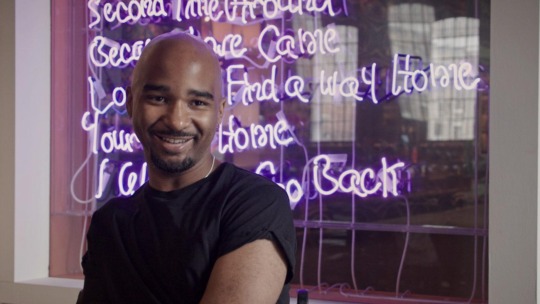

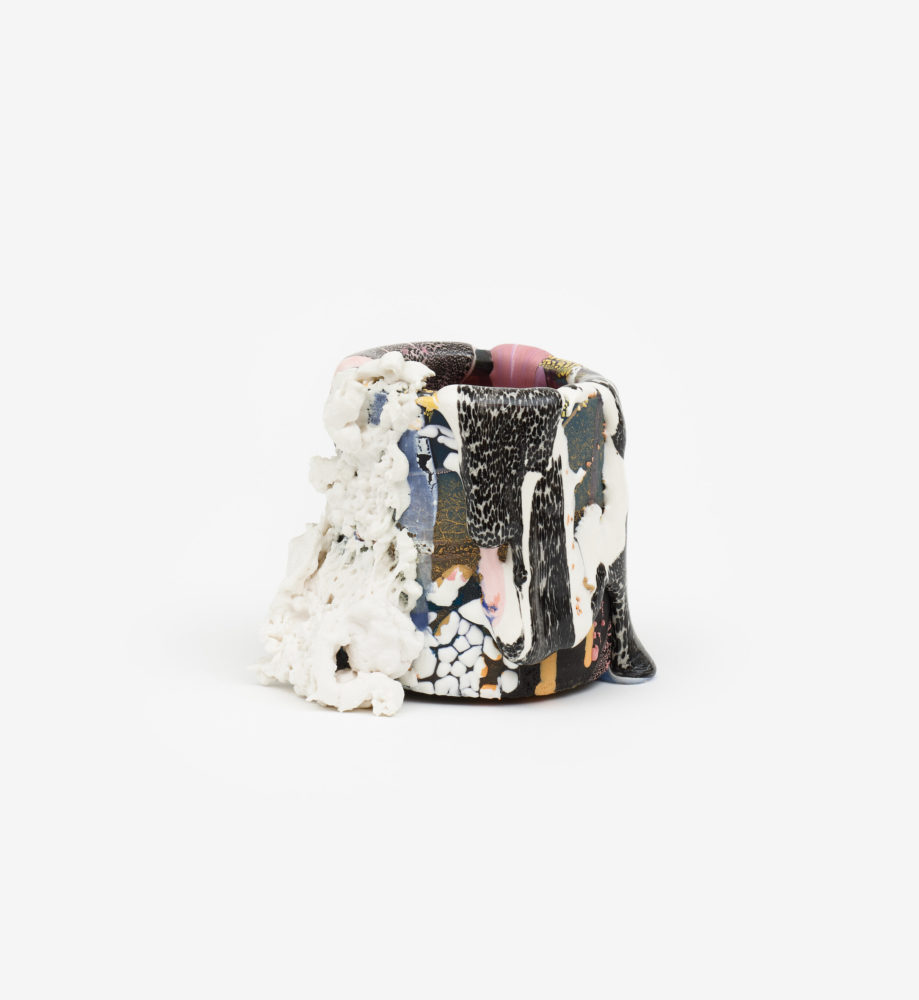
[Brian] Rochefort’s ceramic vessels are part of an ongoing series inspired by the famous image of Francis Bacon’s disarrayed studio. Here, the vessels are used as a canvas to reference modern and contemporary abstract painters that have influenced the artist. Rochefort uses the simple cylinder form and paints the surface with glazes and pigmented clays. Historically, this technique was used to illustrate a story or image about the artisan or owner. Rochefort uses the vessel in a similar way, however the story and images are rooted in nonrepresentational painting… Rochefort has selected four abstract female painters to exhibit [their work] alongside [his ceramics]: Jess Fuller, Joanne Greenbaum, Sadie Laska, and Molly Zuckerman-Hartung. All four artists share similar visual qualities—their paintings are big, vibrant, confident and abstract. Rochefort’s ceramic vessels cluster in the center of the gallery like an installation of a painters studio.
From the exhibition text

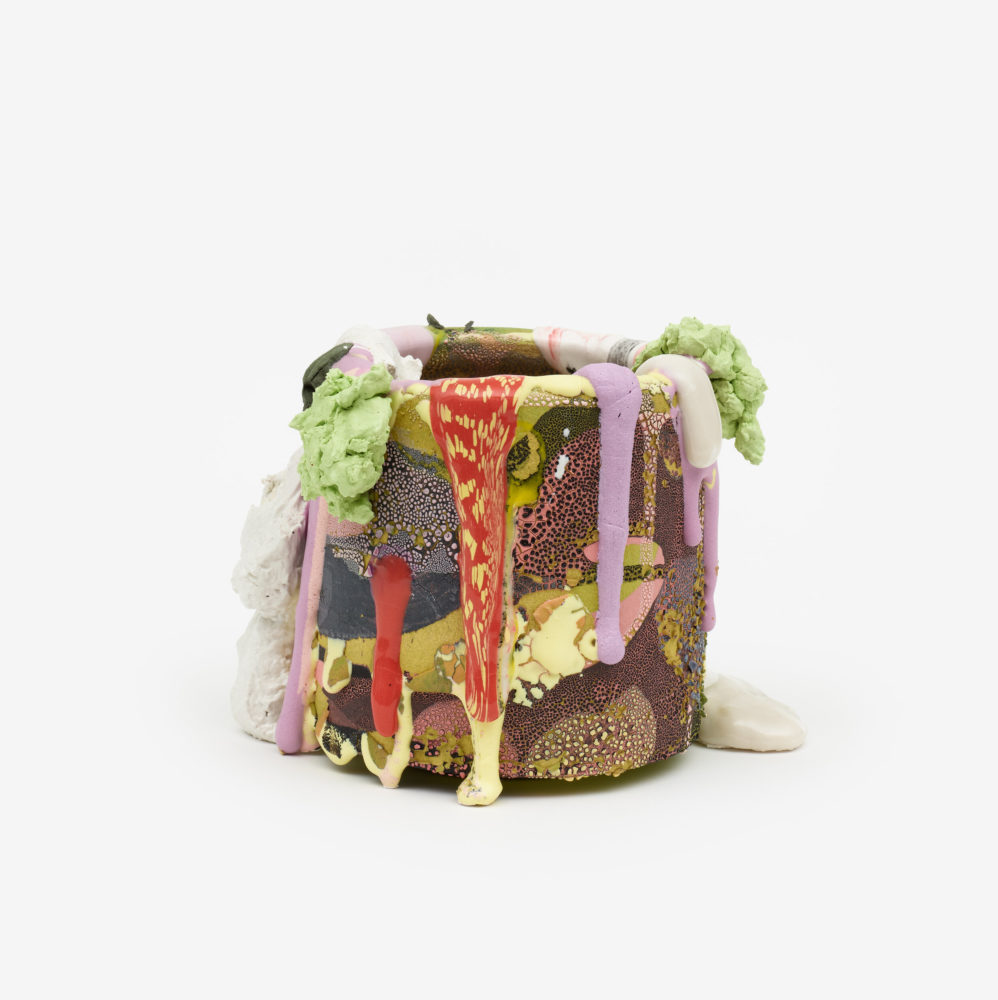
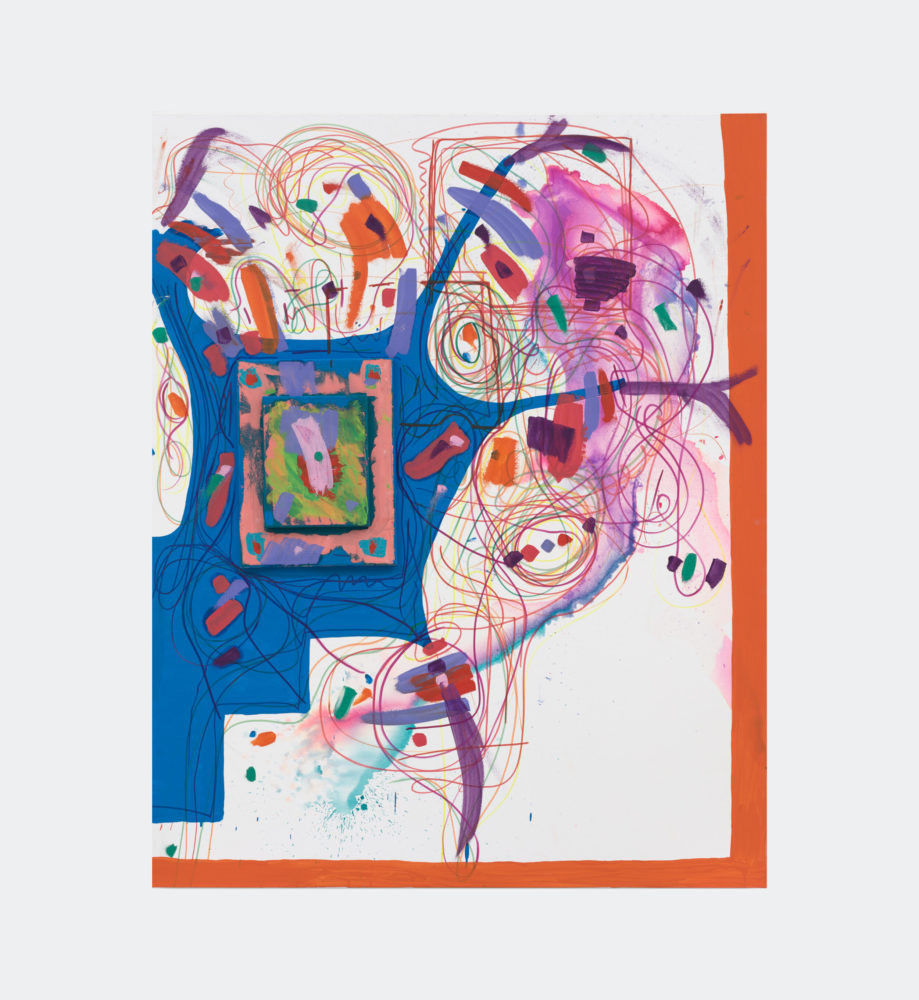
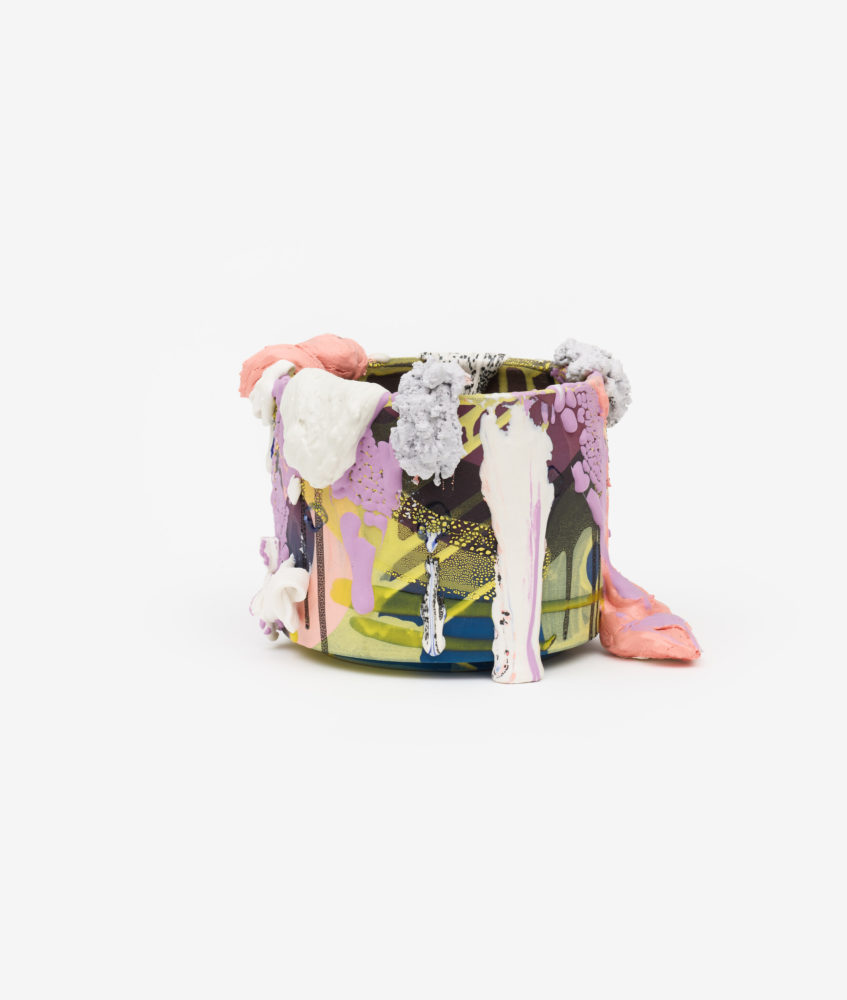
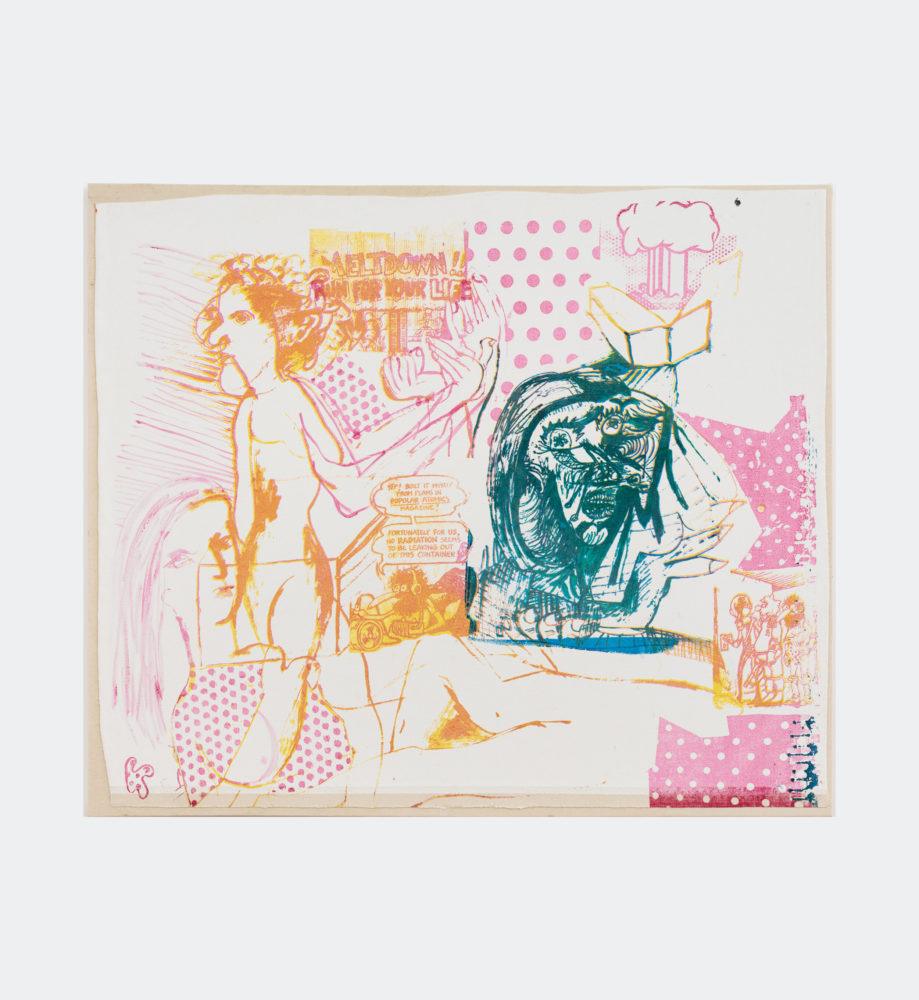


Turpentine was on view at SOCO Gallery in Charlotte, North Carolina, from June 24 through July 31.


